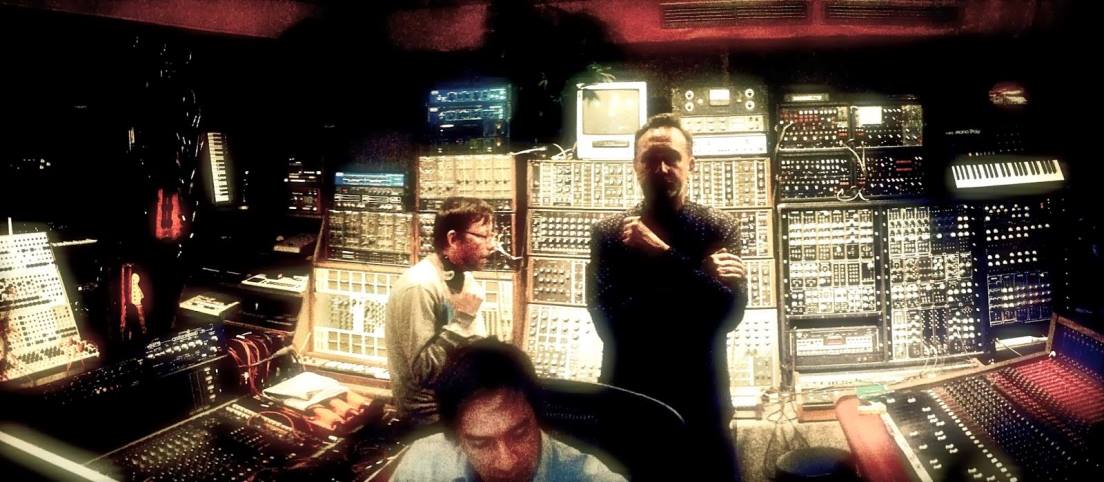
With aims to harness “lost technology to make new themes for the modern world”, WRANGLER are the electronic trio that many have been waiting for.
With vintage synths and drum machines creating a soundtrack for a dissident future landscape, WRANGLER’s debut album ‘LA Spark’ is one of most anticipated electronic releases of 2014. Certainly the pulsing screech of ‘Lava Land’ signifies this is future music harnessing the uncharted possibilities of the past. In effect, it is akin to visiting the moon again, post-Apollo.
The trio all have noted histories in music. Phil Winter has been recording, playing and DJ-ing for a number of years and is a member of folktronica exponents TUNNG who released their fifth studio album ‘Turbines’ in 2013. Synth collector extraordinaire and producer Benge released the acclaimed aural synth encyclopaedia ‘Twenty Systems’ in 2008 and is best known for his part in the collaborative project JOHN FOXX & THE MATHS. And Stephen Mallinder (or Mal as his friends like to call him) needs no introduction as founder member of post-punk pioneers CABARET VOLTAIRE who recently reissued their ‘Collected Works 1983-85’ on Mute.
Building their profile steadily with a BBC 6 Music live session, a special performance at Proof Positive and discussion panels celebrating the work of the Radiophonic Workshop, WRANGLER kindly spoke about the genesis of ‘LA Spark’…
What drew you towards working with each other?
Mal: Friendship, respect, common interests in music, technology, sounds, processes and how much we agree on crap uninspiring music that generally fills the sky. A band has to have a core belief – a code where everybody instinctively knows how things should be done, what’s right and what’s not in the sound, how it is presented and be able to say if someone played something crap or was wearing inappropriate trousers.
How does it feel for you Mal to become part an existing project as opposed to organically forming a new one?
Mal: I suppose that’s better answered by Phil and Benge, but we have been working together for over three years so all WRANGLER material is with the three of us – I’d hate people to think I just arrived at the end. We have done quite a few remixes for other people which was an important part of Wrangler developing a good working process. Ultimately it’s not when but what – what we all contribute.
Phil: Benge and I had been working on stuff in his studio, and I guess in retrospect we were looking for another element to tie our ideas together. I had been in touch with Mal while he was abroad and always thought he would get what we were doing, so when he returned and had a chance to settle himself, we got him down to the studio, job done .
Benge: And I have always been a fan of CABARET VOLTAIRE’s work – so it was really cool to actually get to work with Mal – I remember the moment Phil said “I know Mal really well – we go back years – shall I give him a call?” and I kind of fell off my chair.
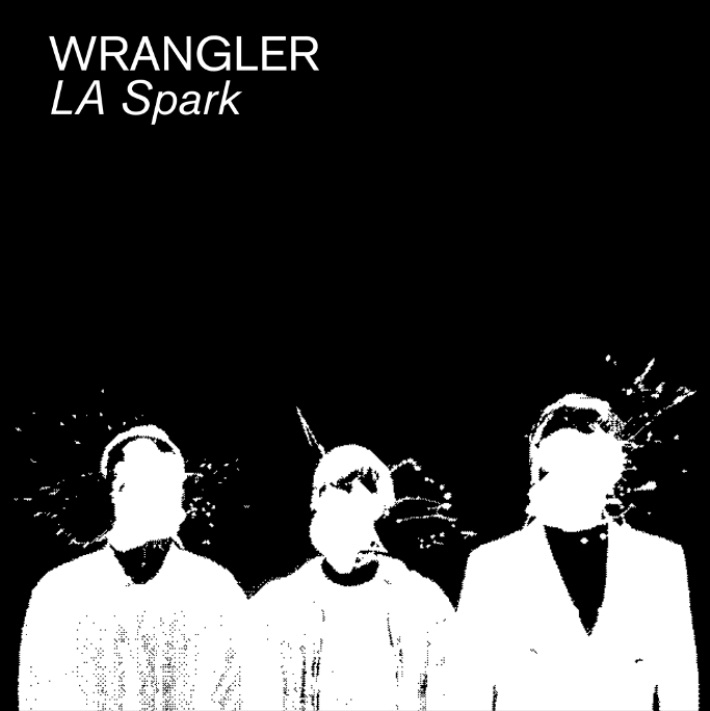
‘Lava Land’ is a key track on the album. What inspired that one?
Mal: The words followed the music, it was a lively track shall we say and the words responded. The sounds confront people’s complacency and I hope the lyrics are similarly words of warning to shake us out of torpor.
Phil: For me it wasn’t just one thing, that’s for sure. I remember it starting as a sort of dark carnival tune, and through jamming it in the studio it just got stranger, Tom Rogerson came in and did some extra synth bits , and we ended up in ‘Lava Land’.
Benge: It’s always exciting when you hear a track suddenly come to life and take on its own character – and this happened on ‘Lava Land’ when Mal started singing through the pitch shifter – it all fell into place really quickly after that.
How have the new developments affected you as a vocalist in the way you might approach a track?
Mal: I think the synergy between voice and music is something that happens, I don’t tend to conceptualise it, music is better being instinctive if it is a collaborative thing. I think I have found a good way of working with the guys and we all work together on the music and how the voice fits, so it evolves rather than me doing vocals on a finished track – it’s a very organic process.
The most abrasive sound on the new album is the vocals, at what point in the writing process did the lyrics integrate with the music?
Mal: This probably follows on from my last answer and it explains how the voice works in WRANGLER – we try to integrate it in the early stages of developing a track. So just as a particular rhythm, bass part, or top line, may shift and change as the track evolves, so the voice shifts and bits get redone as the recording progresses.
Plus a lot of the ideas are worked out in a live situation playing together loud, through the PA, working things out – voice and sounds need to gel.
I don’t know that the voice is the intended to be the most abrasive component but our approach to how a vocal works in a track is intended to push boundaries. The voice is often the least explored dynamic in music, offering a saccharine element to the aggression of a piece. It’s good to occasionally invert that formula.
The screeching, dystopian string machine on ‘Lava Land’ is amazing… what is it and what did you do to it?
Mal: It’s a Roland Angle-Grinder I believe?
Phil: Yep , that’s right , but you’ll have to check with Benge on the specific model number.
Benge: It is a Logan String Melody II, the one used a lot by JOY DIVISION and loads of bands in the mid to late 70s. I bought this one year ago from Sound On Sound magazine classifieds – before eBay existed. Coincidentally I drove all the way to Sheffield to pick it up! The guy selling it said it used to belong to Phil Oakey, but I think he made that up.
What sort of advantages and limitations are there when making an album with primarily modular / analogue synthesizer gear?
Mal: The only thing that limits you really is your imagination. In most creative situations reducing your options is a challenge to optimise what you can, and wish, to do. Freedom from choice is the usually most important part of making something good. If it’s not a struggle to rinse the most out of anything – technology, or yourself, – it’s generally not very good.
Phil: As Mal says the limitations become the advantages, we try not to get too distracted by multiple options and stick to an almost band type set up, four sound sources generally does us.
Benge: When we started me and Phil decided we would only use one synth per track – that’s where the name came from because we would wrangle with each synth until we got a whole track out of it. A lot of those initial experiments ended up on the album, and we’ve got a ton more stuff waiting to be worked on.
With its Aladdin’s Cave of vintage synthesizers, what was the experience like of clocking in to work at the MemeTune studio?
Mal: Well the studio doesn’t have a doorbell and if anyone’s in there and they don’t hear the phone, you can’t get in … so we spend the start of most days down the Hoxton Spark – a café round the corner. Nice tea – they use loose tea not bags and it’s 90p. Once we manage to get in there it’s pure enjoyment, with the occasional dispute when something doesn’t work, which usually turns out to be a dodgy lead.
Phil: It’s f*cking great, once you get in obviously. Sometimes it can be a bit scary after a long session, you get there the next day and realise how much damage you’ve done to the place .
Benge: If you’re stuck outside you could always page me, or maybe send a TELEX!
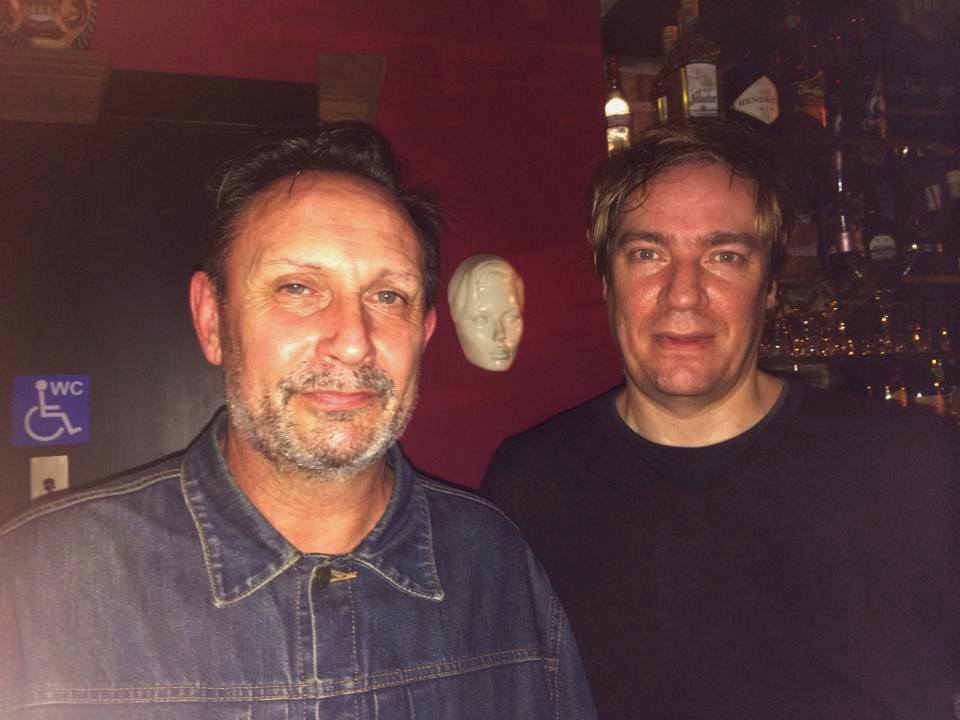
In contrast to 99% of current electronic music, ‘LA Spark’, despite its dark overtones is a very ‘warm’ sounding album… was that a conscious decision?
Mal: I think all music that stands the test of time has to be complex, drawing on ideas from lots of different areas. Making something that can be both seductive but equally needs a listener to work at it is the goal. Warmth and darkness offer a pleasing tension in music – enticing but rather unsettling, it’s a balance worth aiming for.
Phil: I think we’re a pretty unconscious unit in that regard but saying that, we do have an unspoken regard for what is possible with the people and equipment we have at our disposal .
Benge: That warmth sort of oozes out of some of this equipment – things like the Moog Modular going through a plate reverb and into an old analogue console – that’s always going to sound warm and fuzzy to me, in a really good way.
Many musicians work together via the internet without having to meet up in person – was the music you created with WRANGLER literally three guys sitting in a studio jamming out ideas or did you often collaborate remotely?
Mal: The only things we tend to do remotely are in very early stages of tracks – just rough sketches or embryonic ideas of sounds and rhythms. The most enjoyable part is all of us coming together and figuring out how each track should evolve and when it’s cooked. Part of that process for the album was all of us interacting – we were playing all the tracks live before they were properly recorded.
Phil: I don’t remember much remote action, we might bring basic sketches, vocal ideas or simple beats stuff into the studio from our homes. But the vast majority is created by the three of us working together in the room.
Benge: Yeah, towards the end of the process we set up in the live room and played together a lot (partly because we were rehearsing for a gig if I remember rightly) and this really helped focus some of the tracks. Also when it came to doing the final mixes we all got on the console together and turned each mix into a live performance, playing with faders, EQ settings and FX sends and stuff. You can’t do that via Skype!
Does the cut-up vocal track ‘Music IIC’ refer to the first portable Apple computer or is there too much being read into the title?!
Mal: I’ll leave that for anyone who buys the album to decide for themselves. And for Phil and Benge to explain…
Phil: Benge?
Benge: No, it was more an homage to Jean-Claude Risset and Max Matthews.
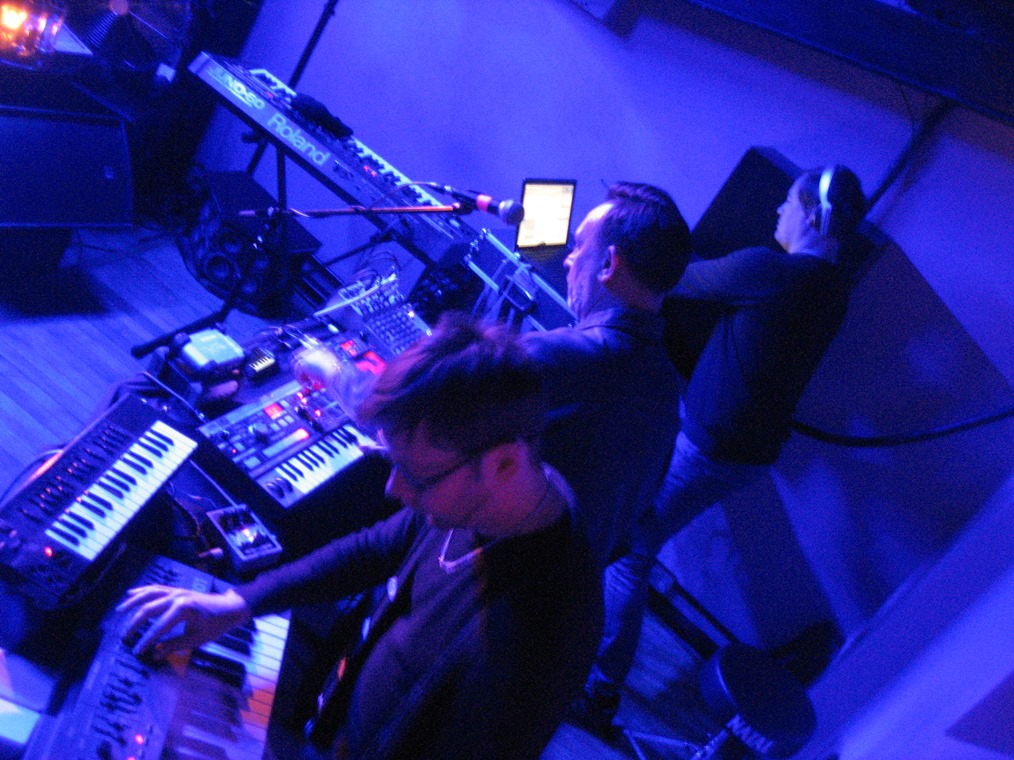
How did you pick ‘Crackdown’ to perform live as WRANGLER as opposed any other track in the CABARET VOLTAIRE back catalogue?
Mal: Well for me it seems the most appropriate – a track which sonically seems right for Wrangler and lyrically seems right for the times. ‘The Crackdown’ is a constant global theme.
Phil: It was quite spontaneous, as performing live should be… we had (sort of) worked out a couple of Cabs tunes for live, just in case it felt right and ‘Crackdown’ seems to have fitted in with the other stuff sonically we are playing at the moment live. And as mentioned, it’s still, for me anyway, a very relevant lyric for these times.
Benge: Yes, it seemed to work last time we played it. Plus, we ran out of our own songs at the end there.
Mute’s box set of Cabaret Voltaire material between 1983 to 1985 and joining WRANGLER have given you Mal, the highest profile since those heady days on Some Bizzare / Virgin… how are you handling all the attention?
Mal: Oh I cope 😉
To be honest, the Cabs made a lot of music and over a long period of time, so there always seems to be some period of our work being analysed for is continuing relevance or reissued in some form.
In fact, and for various reasons, I’ve not really had much to do with the reissue. The WRANGLER recordings and gigs have been going on for a few years so it was funny that our album followed on from the box set – I’ve had no control over the timing, it just happened that way. We planned on having WRANGLER out for a while but these things take time.
I’m happy to know the music I’ve been involved in – past and present – has resonance. Understandably I get more excited about the present and working with Phil and Benge is the primary thing. Because I’ve BEEN living overseas, I think people forget that I’ve been doing lots of stuff between CABARET VOLTAIRE and WRANGLER – I had my own label with about thirty releases, did the HEY RUBE album last year and have the KULA album, LOOPED FOR PLEASURE and various collaborations all due for release. Plus lot of other stuff.
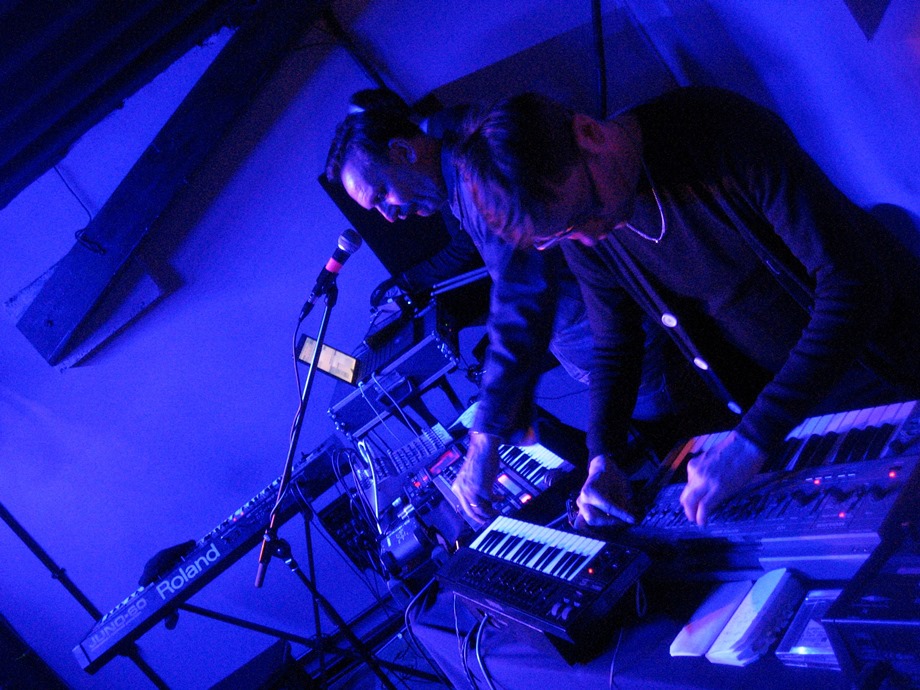
It’s been over 20 years since you played live with CABARET VOLTAIRE, how was the experience of the recent Wrangler gig at the Servant Jazz Quarters in London?
Mal: Well I’ve always played live – the KU-LING BROS in Australia were a very live thing – I played with I MONSTER etc and I’ve DJ’ed constantly so it wasn’t too odd – and we’ve done a few WRANGLER gigs so we seem to be on top of it. It’s better when we can use the visuals which we didn’t at Jazz Quarters but we’ve done a couple of shows with Tom Rogerson at Proof Positive and that’s been good. A good night, we enjoyed it – WRANGLER function as a band and we love playing.
Have you watched the new Benge-featuring modular synthesizer documentary ‘I Dream Of Wires’? And if so, what was your opinion of it?
Mal: Well Benge (and a few other people who I know are in it) will shout at me but no, I’ve still not seen it… mea culpa!! I was hoping I could get a copy.
You also work at the University of Brighton, does lecturing the new generation give you hope for the future of music / media production?
Mal: I talk to people all over in lots of places about media, film, music, art, creativity – I think there are some very talented folk coming through. I think the opportunity and mechanisms for creating and sharing are limitless now but this in itself is a challenge. Popular culture has a long history now and any artist has to carry that burden of familiarity. The key is no longer making but remaking – finding new contexts and connections.
The tools of production have been democratised, we all have the opportunity to create but need to decide for ourselves why we wish to do it because in a world of plenty, it is not as easy to monetise creative production and is increasingly competitive. But if something is good, it will shine and be seen or heard.
I would like to see more respect given – we seem to be downplaying and marginalising the arts in education in the push to make everyone happy worker bees. But imagination is what defines us – there is nothing better than experiencing the fulfilment of making and sharing great ideas and creations. That will never change.
ELECTRICITYCLUB.CO.UK gives it warmest thanks to WRANGLER
Special thanks also to Steve Malins at Random PR
‘LA Spark’ is released by Memetune in vinyl, CD and digital formats on 5th May 2014. There is a free download of the song ‘Theme From Wrangler’ with pre-orders via Cargo Records at http://cargorecordsdirect.co.uk/products/wrangler-la-spark
https://www.facebook.com/pages/We-Are-Wrangler/1389558817973207
https://twitter.com/wearewrangler
http://memetune.net
Text and Interview by Chi Ming Lai
22nd April 2014
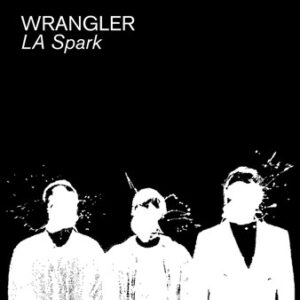 At this point in time, WRANGLER are probably the nearest we have to an electronic supergroup.
At this point in time, WRANGLER are probably the nearest we have to an electronic supergroup.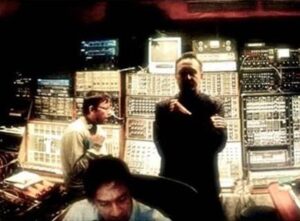 ‘LA Spark’ introduces a lighter, more melodic and 4/4 sound to the proceedings with hypnotic interwoven monosynth lines and another flanged string synth wash joining the proceedings.
‘LA Spark’ introduces a lighter, more melodic and 4/4 sound to the proceedings with hypnotic interwoven monosynth lines and another flanged string synth wash joining the proceedings.





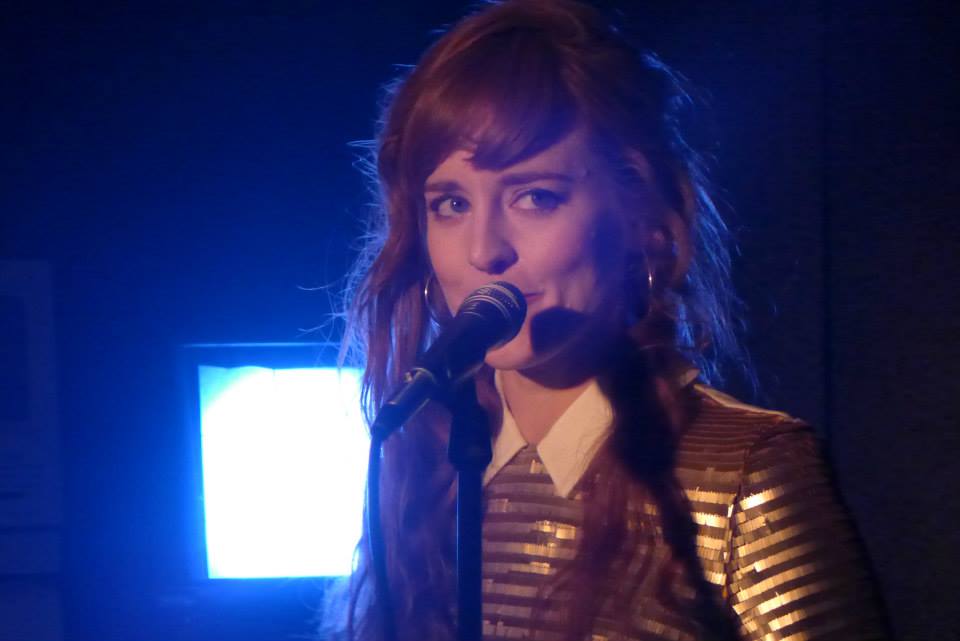
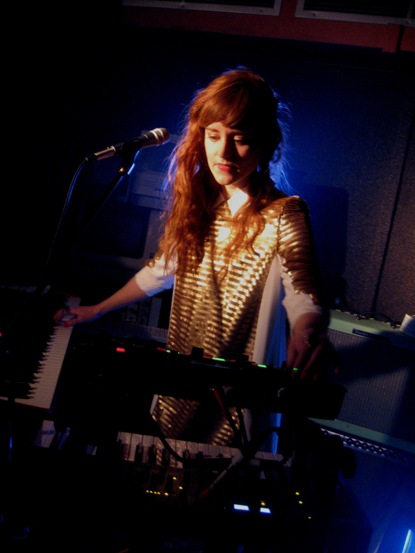
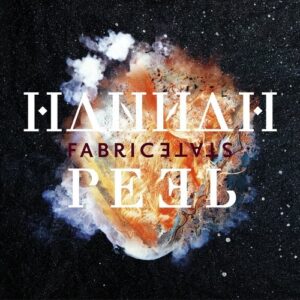
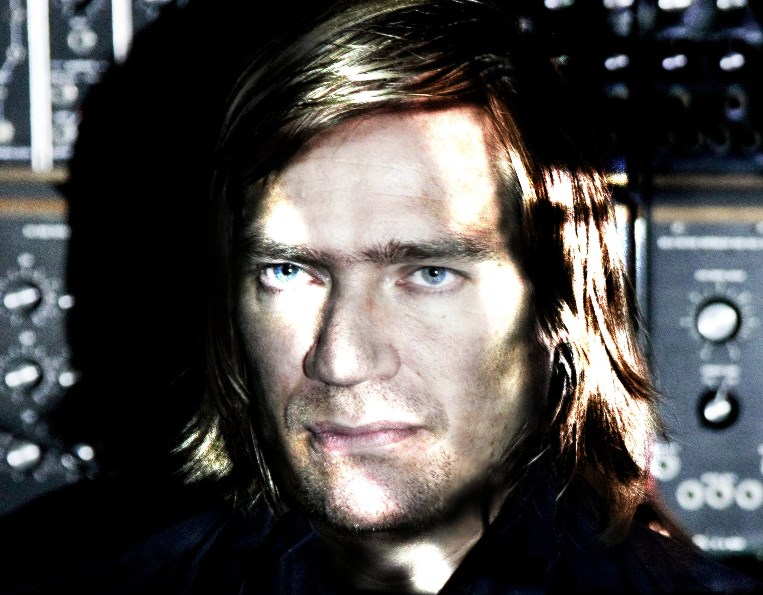
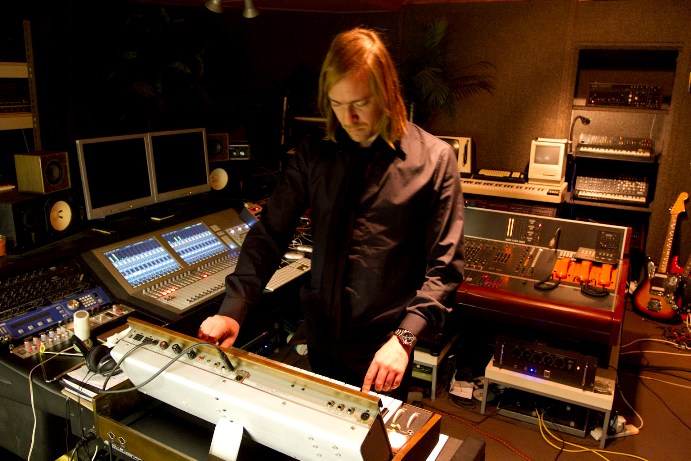
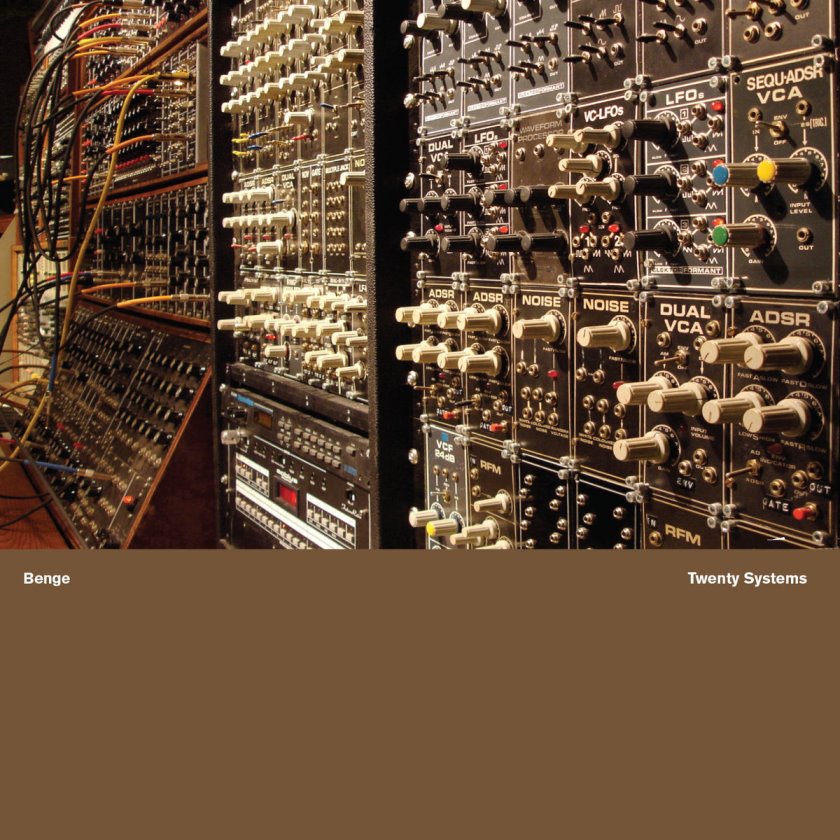
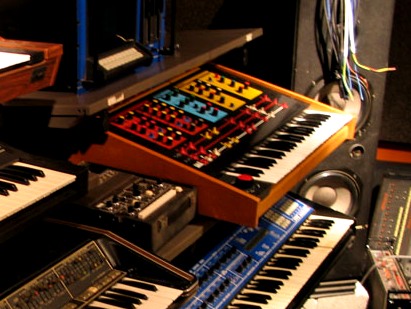
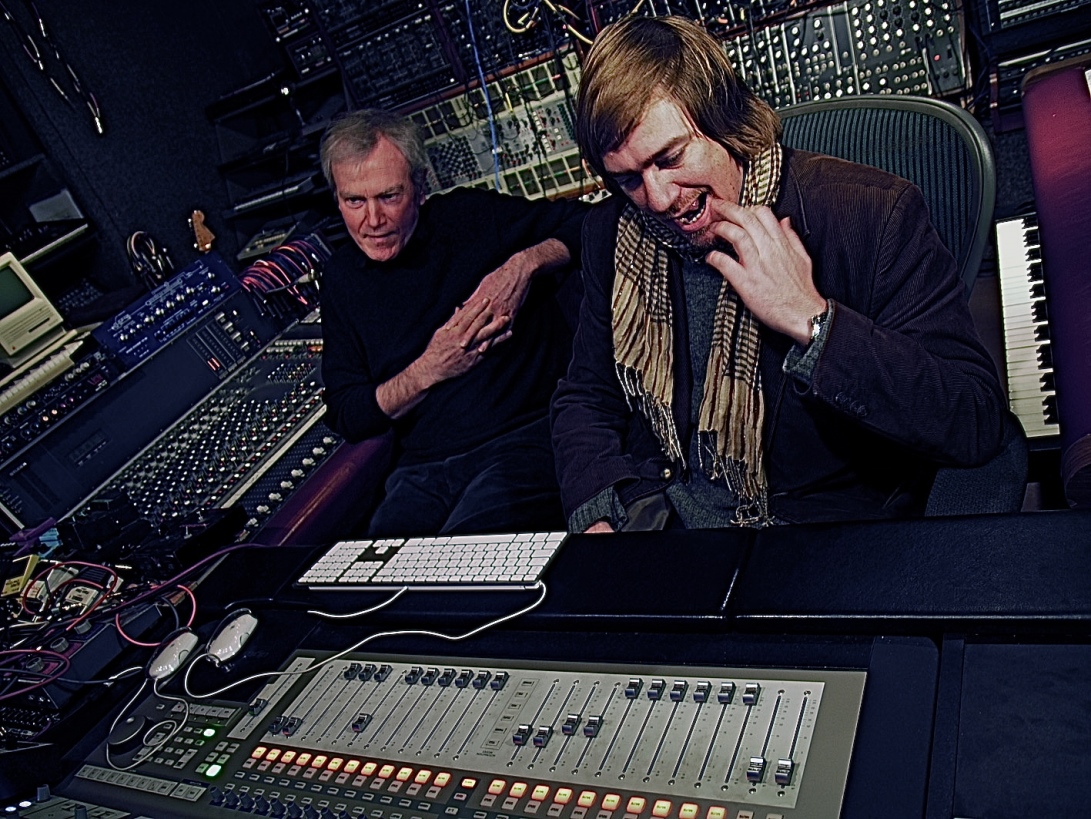
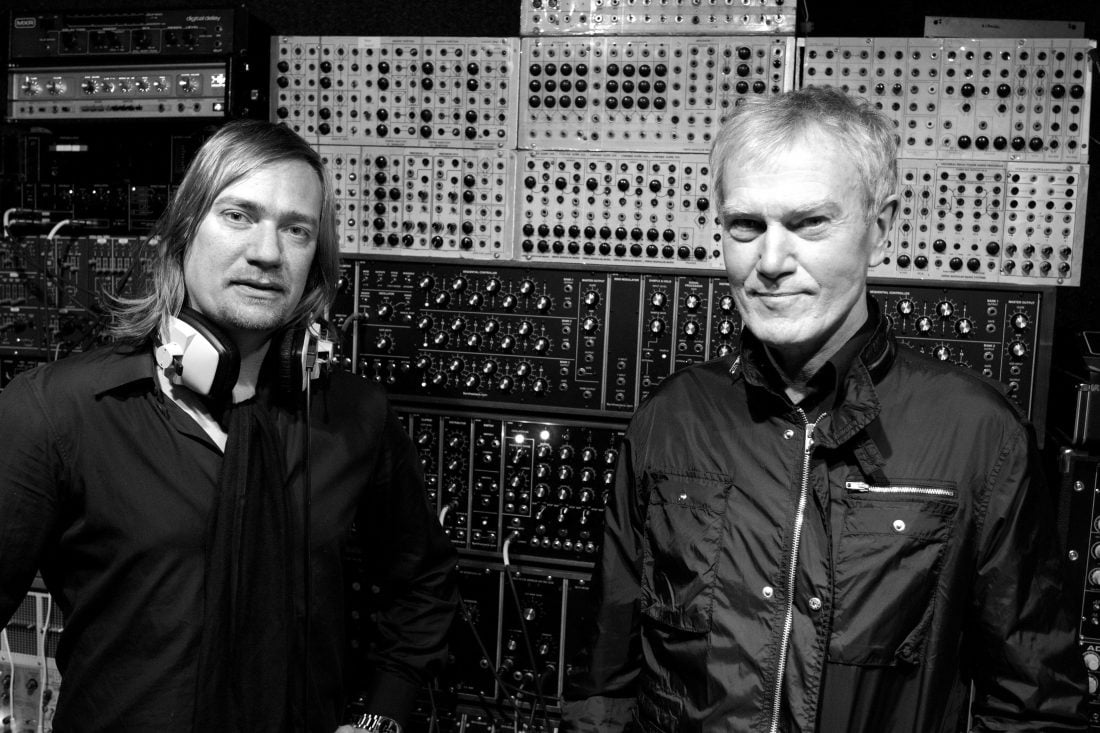
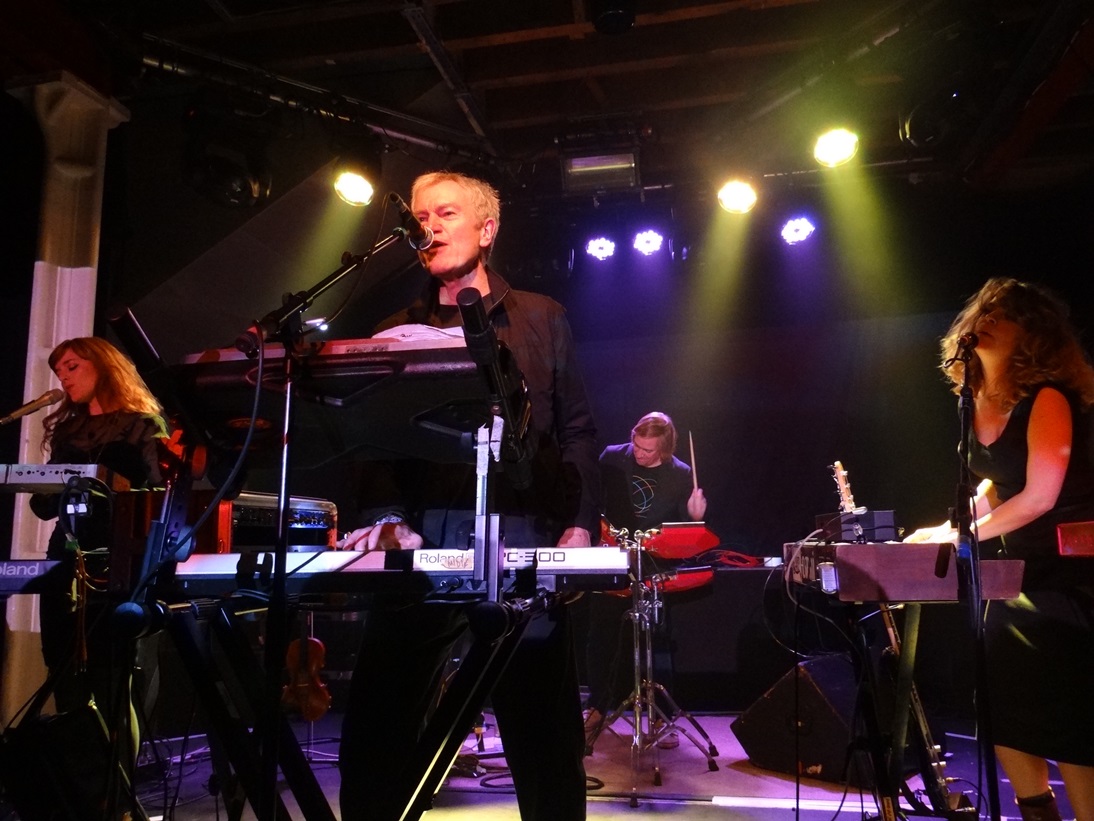
Follow Us!